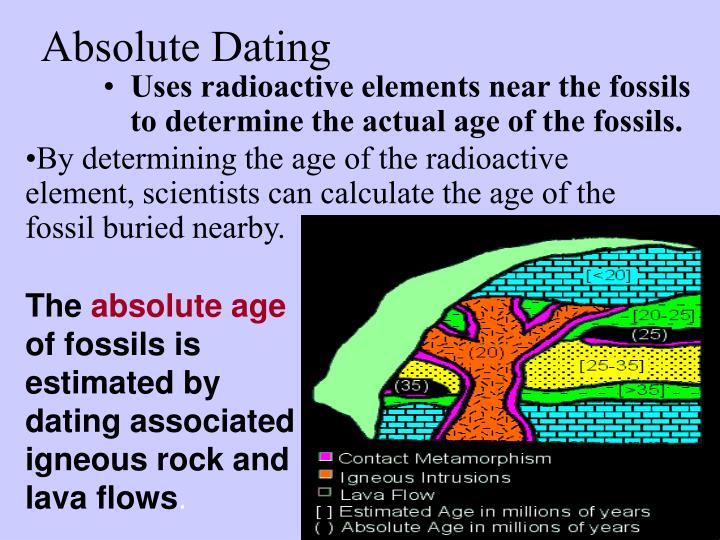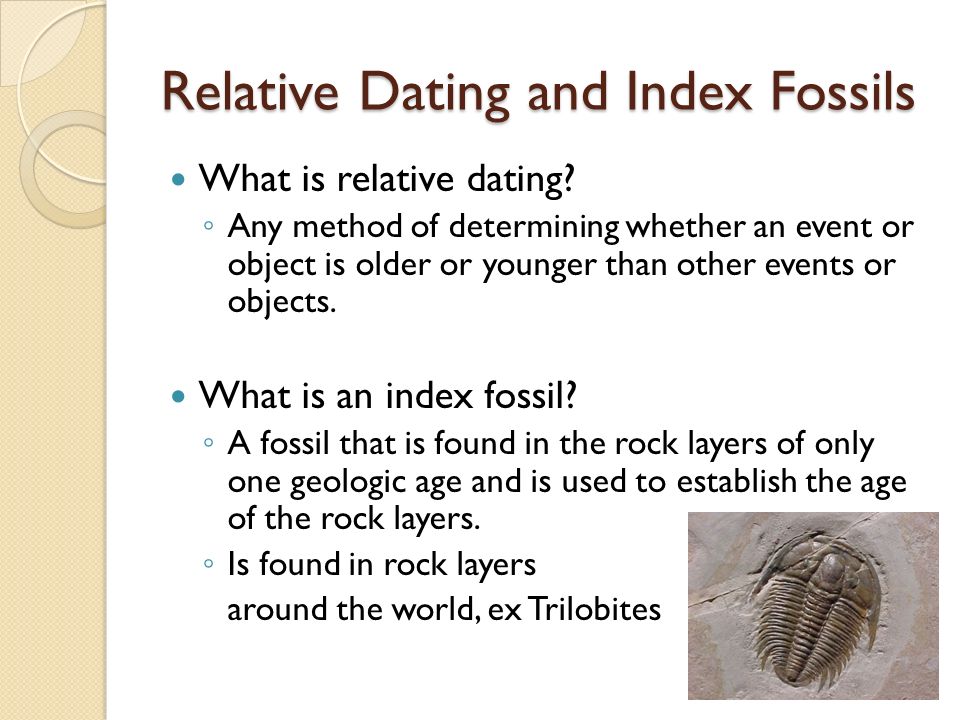Marketing
How do you determine the absolute dating of rocks and fossils - Bjelovar
Geologic Age Dating Explained

Dating Site: How do you determine the absolute dating of rocks and fossils
Based on the analysis of these samples, scientists estimate that the Earth itself is about 4. Fossils, however, form in sedimentary rock -- sediment quickly covers a dinosaur's body, and the sediment and the bones gradually turn into rock. Maybe someday, you will makean observation or discovery that will contribute to our understanding of ourEarth and the universe we live in. Not all rocks have radioactive elements.

Geologists use radiocarbon to date such materials as wood and pollen trapped in sediment, which indicates the date of the sediment itself. Carbon-14, the radioactive isotope of carbon used in carbon dating has a half-life of 5730 years, so it decays too fast. If an igneous or other rock is metamorphosed, its radiometric clock is reset, and potassium-argon measurements can be used to tell the number of years that has passed since metamorphism.

Dating Fossils – How Are Fossils Dated? - Using the basic ideas of bracketing and radiometric dating, researchers have determined the age of rock layers all over the world.

This is what archaeologists use to determine the age of human-made artifacts. But carbon-14 dating won't work on bones. The half-life of carbon-14 is only 5,730 years, so carbon-14 dating is only effective on samples that are less than 50,000 years old. Dinosaur bones, on the other hand, are millions of years old -- some fossils are billions of years old. To determine the ages of these specimens, scientists need an isotope with a very long half-life. Some of the isotopes used for this purpose are uranium-238, uranium-235 and potassium-40, each of which has a half-life of more than a million years. Unfortunately, these elements don't exist in dinosaur themselves. Each of them typically exists in the fossil, or rock made from cooled magma. Fossils, however, form in sedimentary eocks -- sediment quickly covers a dinosaur's body, and the sediment and the bones gradually turn into rock. But this sediment doesn't typically include the necessary isotopes in measurable amounts. Fossils can't form in the igneous rock that usually does contain the isotopes. The extreme temperatures of the magma would just destroy the bones. So to determine the how of sedimentary dating layers, researchers first have to find neighboring layers of Earth that include igneous rock, such as volcanic ash. These layers are like bookends -- they give a beginning and an end to the period of time when the sedimentary rock formed. By using radiometric dating to determine the age of igneous brackets, researchers can accurately determine the age of the sedimentary layers between them. Using the basic ideas of bracketing and radiometric dating, researchers have determined the age of rock layers all over the world. This information has also helped determine the age of the itself. While the oldest known rocks on Earth are about 3. Based on the analysis of these samples, scientists estimate that the Earth itself is about 4. In addition, the oldest known determinee rocks are 4. Since probably formed at the same time, this supports the current idea of the Earth's daring />You can learn more about fossils, dinosaurs, radiometric dating and related rocks by reading through the links on the determine page. Other Foesils Methods Radiometric dating isn't the only method of determining the age of rocks. Other techniques include analyzing amino acids you measuring changes in an object's absolute field. Scientists have also made improvements to the standard radiometric measurements.
Relative/Absolute Dating
In 1770, forexample, the huge jaws of a primeval beast were discovered in Holland lateridentified as belonging to a Mosasaurus and elephant bones were discovered inParis. Any dead material incorporated with sedimentary deposits is a possible candidate for carbon-14 dating. It's this resetting process that gives us the ability to date rocks that formed at different times in earth history. Radiometric dating has been used to determine the ages of the Earth, Moon, meteorites, ages of fossils, including early man, timing of glaciations, ages of mineral deposits, recurrence rates of earthquakes and volcanic eruptions, the history of reversals of Earth's magnetic field, and many of other geological events and processes. How Do Scientists Know the Age of Rocks? Layers of rock are deposited sequentially.
[Speed dating over 50 edmonton|Shark tank guy dating dancing with the stars|Dating sites north east england]
Post je objavljen 31.01.2019. u 21:40 sati.